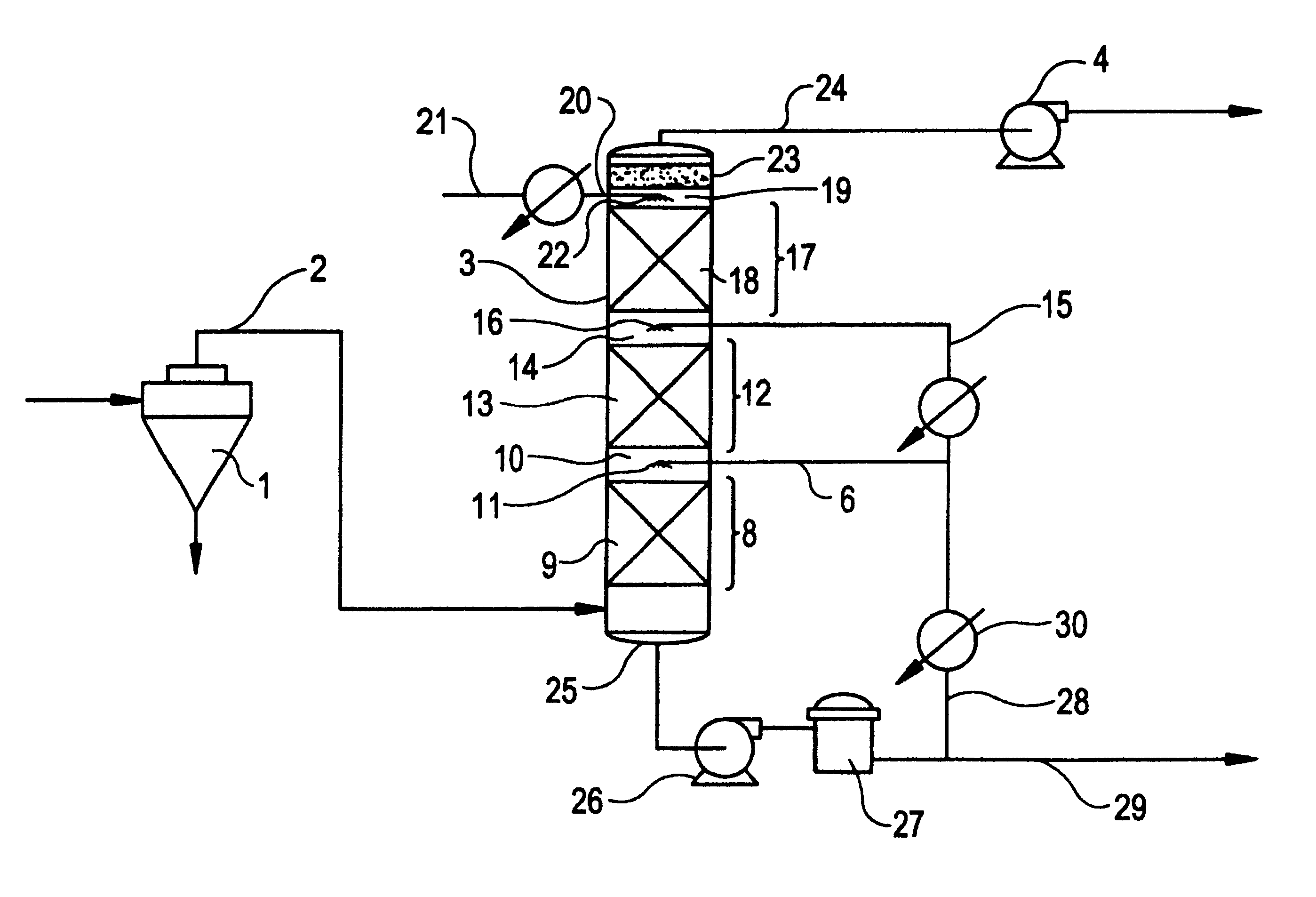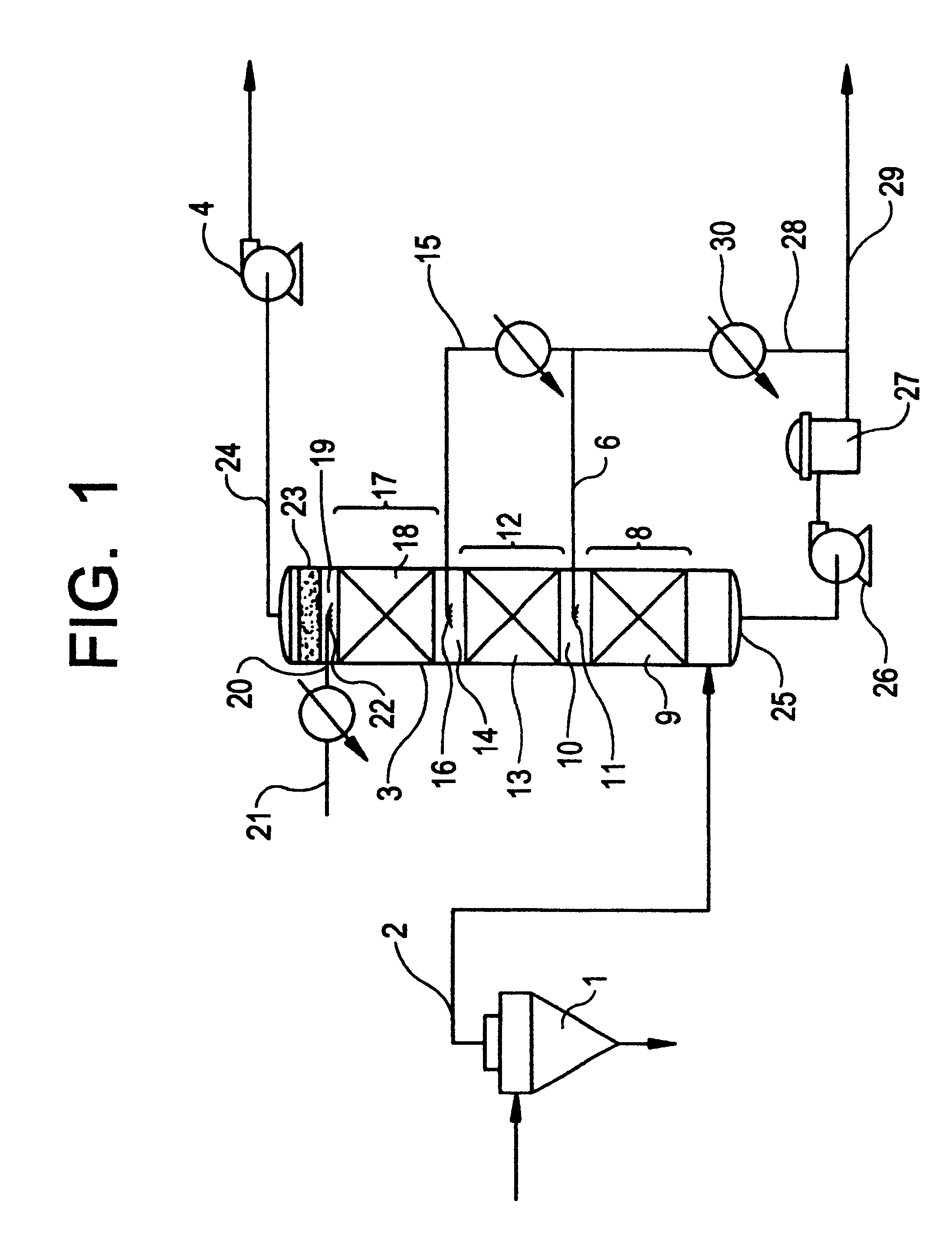System to quench gasses and remove condensables
a gas system and condensable technology, applied in the direction of separation process, dispersed particle separation, chemistry apparatus and processes, etc., can solve the problems of contaminating the gas, aerosol mist formation, and inability to remove gaseous or particulate contaminants in some cases
- Summary
- Abstract
- Description
- Claims
- Application Information
AI Technical Summary
Benefits of technology
Problems solved by technology
Method used
Image
Examples
Embodiment Construction
Aerosol mist elimination by slowed quenching may be shown in twin column systems as well as single column systems. For example, when cleaning nitrogen with cool ethylene glycol and using the conventional twin column system illustrated in FIG. 2, flow rates were varied to control the amount of aerosol mist formation in the quenching column. The following results were obtained specifically by varying the flow rates of gas and cooling liquid within the first column of this twin column system. Also, results were based on the total flow of ethylene glycol since instrumentation to measure individual flow to the spray bar and column top was not available. Low ethylene glycol recirculation rates (680 gpm) yielded the best gas quality. In fact, no mists were detectable at any condition where the glycol flow was at or below 680 gpm. Similarly, acceptable gas quality was always achieved at high gas throughputs (13,600 scfm). Conversely, high ethylene glycol recirculation flow rates (880 gpm) c...
PUM
| Property | Measurement | Unit |
|---|---|---|
| droplet size | aaaaa | aaaaa |
| diameter | aaaaa | aaaaa |
| height | aaaaa | aaaaa |
Abstract
Description
Claims
Application Information
 Login to View More
Login to View More - R&D
- Intellectual Property
- Life Sciences
- Materials
- Tech Scout
- Unparalleled Data Quality
- Higher Quality Content
- 60% Fewer Hallucinations
Browse by: Latest US Patents, China's latest patents, Technical Efficacy Thesaurus, Application Domain, Technology Topic, Popular Technical Reports.
© 2025 PatSnap. All rights reserved.Legal|Privacy policy|Modern Slavery Act Transparency Statement|Sitemap|About US| Contact US: help@patsnap.com



